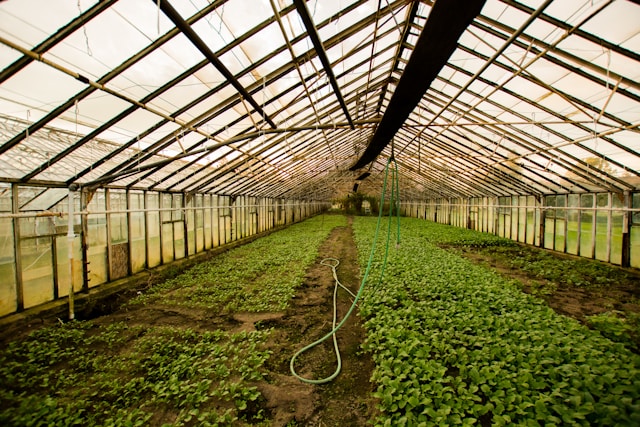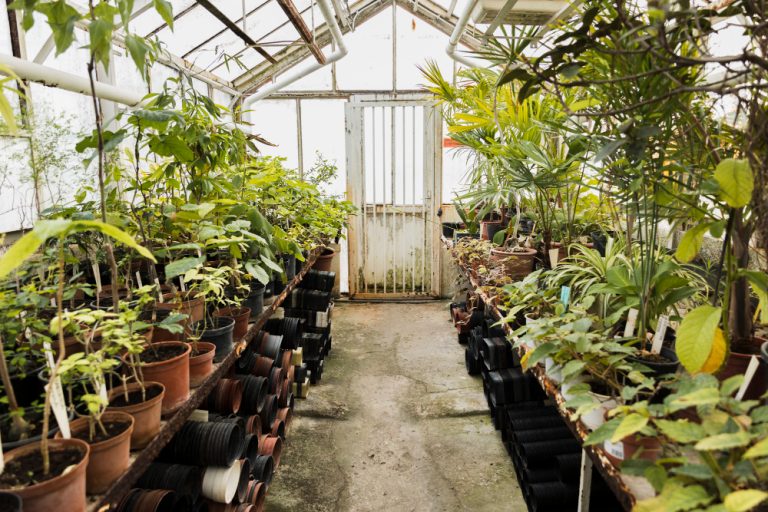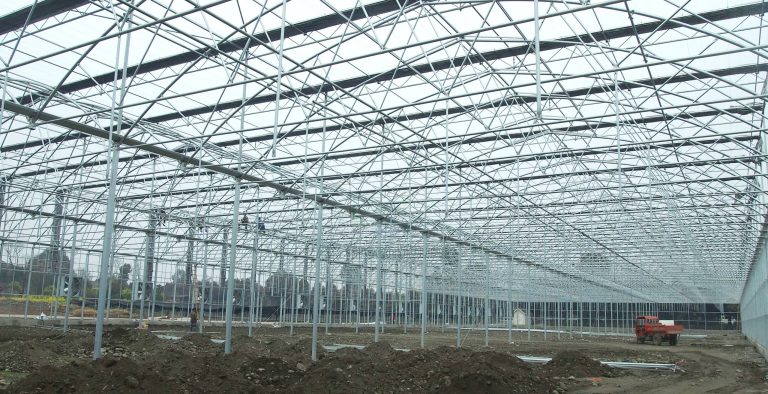
Choosing Between Canopy and Roof Installation
Understanding the Options
Hailnetting protects crops from hail, typically installed in agriculture. “Canopy” likely means using support structures (like hoops or poles) to create a covering over crops, common in open fields. “Roof” might mean attaching netting to an existing structure, like a greenhouse roof, but this is less common for hailnetting.
Factors to Consider
- Crop Type: For tall crops (e.g., fruit trees), draping or canopy works well; for low crops (e.g., vegetables), a canopy is better for access and ventilation.
- Hail Severity: Severe hail may need a sturdy canopy; moderate hail might allow simpler draping.
- Cost and Labor: Canopy installation is costlier and requires more effort; draping is cheaper and easier.
- Ventilation and Light: Canopy allows better airflow and light, while draping may block more, affecting crop health.
- Existing Structures: If you have a greenhouse, consider roof installation, but ensure it can support the netting.
Recommendation
For most cases, a canopy installation using support structures is versatile and effective, especially for open fields. If cost is a concern, draping might suffice for less severe hail. For greenhouses, roof installation could work, but check structural capacity.
Survey Note: Detailed Analysis of Hailnetting Installation Methods
Hailnetting is a critical agricultural tool designed to protect crops, fruit trees, and gardens from hail damage, ensuring yield and quality in regions prone to severe weather. The user’s query about choosing between “canopy” and “roof” installation methods requires a deep dive into the practical applications, terminology, and factors influencing the decision.
Background on Hailnetting
Hailnetting is typically made from durable materials like polypropylene or high-density polyethylene (HDPE), designed to withstand harsh weather conditions while allowing light and air to reach the crops. It is most effective against small, soft hail and moderately effective against large hailstones, with installation timing being crucial—ideally before crops are at risk, such as after tilling or before monsoon seasons.
Interpreting “Canopy” and “Roof”
The terms “canopy” and “roof” need clarification in the context of hailnetting:
- Canopy: This likely refers to installing hailnetting using support structures, such as hoops, arches, or poles, to create a protective covering over the crops. This method is standard in open-field agriculture, where netting is stretched above the plants to shield them from hail while allowing ventilation and light penetration. Examples include posts spaced 12 feet apart with netting installed 4-8 feet above ground level, ensuring air passage.
- Roof: This term is less common for hailnetting in traditional agriculture. It may refer to integrating the netting into an existing structure, such as the roof of a greenhouse or a building used for urban agriculture. However, searches for “hailnetting on greenhouse roof” did not yield standard practices, suggesting this is not a primary method (Amazon.com : Mitef Anti-Aging Orchard Anti-Hail Netting Vegetable Garden Hail Protect Netting,16.3x10ft : Patio, Lawn & Garden). Given the context, “roof” might be a misnomer, and the user may intend to compare canopy installation with draping directly over plants.
Common Installation Methods
Based on the research, the following installation methods were identified, which can be categorized under “canopy” or related approaches:
- Drape Down: Commonly fitted in rows for crops, best for fruit trees, protecting from tip to toe before fruit ripens, and can be used as shade. This method is simpler and cheaper, suitable for areas with less severe hail.
- Shady Canopies, Pyramid Shape, Flat as Shade: These are specific installation options for hailproof netting, likely falling under the “canopy” category, using support structures to create a protective cover.
- Posts Spaced 12 ft Apart: Install netting 4-8 ft above ground level on the exterior, several inches above openings for air passage, ensuring ventilation.
- Tie Off and Stretch: Tie one end to a post or stake, stretch between posts, and secure with lawn staples in corners if not using stakes, a method that aligns with canopy installation.
- Early Growth Stage Installation: Most effective when installed before crops are at risk, such as after tilling, applicable to both canopy and draping methods.
- Grommets Every 4 ft: Eyouagro anti-hail nets have grommets for fastening with rope or twine, facilitating easy installation, often used in canopy setups.
For “roof” installation, while not standard, it could involve attaching hailnetting to greenhouse roofs, potentially using clips or fasteners, as seen in product descriptions for greenhouse accessories (Amazon.com : Mitef Anti-Aging Orchard Anti-Hail Netting Vegetable Garden Hail Protect Netting,16.3x10ft : Patio, Lawn & Garden). However, this is less documented and may require ensuring the structure can bear the additional weight and withstand hail impacts.
Factors Influencing the Choice
Choosing between canopy and roof installation (or interpreting “roof” as draping) involves several considerations:
- Type of Crop:
- Tall crops, such as fruit trees, may benefit from draping, which protects from tip to toe and is easier to install (Crop Saver Hail Netting Protects Vines, Berries, Row Crops).
- Low-growing crops, like vegetables, may require a canopy for better access, ventilation, and protection, especially in row setups.
- Hail Frequency and Severity:
- In regions with frequent or severe hail, a sturdy canopy structure is recommended to ensure the netting withstands impacts. Draping may suffice for areas with moderate hail, but it risks tearing under heavy storms (Crop Saver Hail Netting Protects Vines, Berries, Row Crops).
- Ventilation and Light Penetration:
- Canopy installations, with netting stretched above the crops, allow for better airflow and light, crucial for crop health. Draping can block more light and reduce ventilation, potentially affecting growth.
- Cost and Labor:
- Draping is generally cheaper and requires less labor, as it involves laying the netting directly over plants without additional structures. Canopy installation involves purchasing and setting up frames or hoops, increasing both cost and effort.
- Space and Aesthetics:
- Canopy structures take up more vertical space and may be less aesthetically pleasing, especially in small plots. Draping is more compact and discreet, suitable for gardens with limited space (The Crazy Hail Protection We Built for Our Garden • The Prairie Homestead).
- Existing Structures:
- If operating within a greenhouse, installing hailnetting on the roof could be an option, but this requires ensuring the structure’s design can support the netting and withstand hail. This is less common and may involve additional engineering considerations (Amazon.com : Mitef Anti-Aging Orchard Anti-Hail Netting Vegetable Garden Hail Protect Netting,16.3x10ft : Patio, Lawn & Garden).
Comparative Analysis
To aid in decision-making, the following table summarizes the key differences between canopy and potential “roof” (interpreted as draping for comparison, given the lack of standard roof installation):
| Aspect | Canopy (Support Structure) | Draping (Potential “Roof” Interpretation) |
|---|---|---|
| Suitability | Row crops, low-growing vegetables, open fields | Fruit trees, tall crops, less severe hail areas |
| Protection Level | High, withstands severe hail with sturdy frames | Moderate, may tear under heavy hail |
| Ventilation and Light | Excellent, allows airflow and sunlight | Reduced, may block light and airflow |
| Cost and Labor | Higher, requires frames and installation effort | Lower, simpler to install and maintain |
| Space Requirement | Takes more vertical space, less discreet | Compact, more discreet, suitable for small plots |
| Installation Timing | Best before risk, needs planning for structures | Can be done quickly, flexible timing |
Practical Recommendations
- For most agricultural settings, especially open fields, a canopy installation using support structures is recommended due to its versatility, effectiveness against severe hail, and better crop health through ventilation and light. This aligns with standard practices for hailnetting, as seen in industry guidelines (Crop Saver Hail Netting Protects Vines, Berries, Row Crops).
- If cost and simplicity are priorities, draping can be a viable alternative, particularly for fruit trees or areas with moderate hail. This method is economical and easier to implement, as noted in user experiences (The Crazy Hail Protection We Built for Our Garden • The Prairie Homestead).
- For greenhouse settings, consider roof installation if the structure can support the netting, but ensure compliance with structural engineering standards, as this is less documented and may require professional assessment.
Conclusion
The choice between canopy and roof installation for hailnetting depends on the specific agricultural context, crop type, and environmental conditions. Canopy installation, using support structures, is the most common and effective method for open fields, offering robust protection and better crop health. Draping, interpreted as a potential “roof” method, is simpler and cheaper but less suitable for severe hail. For greenhouses, roof installation is possible but requires careful consideration of structural capacity. Farmers should assess their needs, budget, and local hail patterns to make an informed decision, potentially consulting industry resources for detailed installation drafts.




